Tomatoes are indeterminate and determinant - what is the difference
When there is a desire to update tomato varieties, summer residents rush to the store. The choice of varieties of your favorite vegetable of all time is very wide: sweet or sour, red, pink or yellow, early or late, short or tall - there are options for every taste. But many are puzzled by the inscription on the seed bag - an indeterminate variety of tomatoes. This is nothing more than a variety of tall tomatoes, usually 2-3 m high.
What are indeterminate tomatoes?
The name "interdeterminant" is translated from Latin as "indefinite". From a botanical point of view, this means that the stem of such tomatoes grows exactly as long as the growing season lasts or conditions permit.
All indeterminate tomatoes are tall, but not all tall varieties are indented. There are also varieties of moderate height, which are conventionally referred to as standard. But, unlike true standard ones, they definitely need support.
The vegetation period of indents is usually 9-12 months, therefore, in the conditions of the Russian climate, you cannot get the full benefit from them even on fertile southern lands. But in the presence of a heated greenhouse with properly organized supplementary lighting, the harvest of "undefined" tomatoes can be enjoyed until next spring.
In the south, indeterminate varieties are grown in the open field, but this option is not applicable for the Middle Lane due to the short summer.
Tomatoes are determinate and indeterminate - what's the difference?
Outwardly, indents differ from determinant varieties and hybrids primarily in size: if their growth is not limited, the height can be more than 3 m.For example, the most popular representative, the De Barao variety, grows up to 4 or more m in the southern beds per season.
Another difference from low and medium-sized varieties is that the first flower cluster is formed quite high, above the 9th, in some varieties above the 12th leaf, but the stem growth does not stop. It is continued by the nearest upper lateral shoot, which, after the formation of the next series of buds, will be replaced by a new one.
Unlike undersized varieties, the collection of varieties and hybrids of indents does not contain early varieties; the ripening period for them is at least 100 days.
You can determine what exactly grows in the garden, indent or tall tomato, by the number of leaves between the fruit clusters. Indents have 3 of them, determinant ones - 1-2.
Indeterminate tomatoes yield much higher yields than regular tall ones, not to mention medium and short ones. With proper care from 1 m2 harvest 15-16 kg. They bear fruit in the open field until frost, and from the usual ones, by September, the last fruits are already removed.
Advantages and disadvantages of indeterminants
The indisputable advantages of indeterminate varieties include the following.
- In a small area, indents significantly save space. Moreover, 10 bushes are harvested, twice or three times the number of fruits obtained from 20 bushes of undersized tomatoes.
- Plants are better ventilated and illuminated by the sun, therefore, the quality characteristics of the fruits are much higher.
- In plants tied to trellises, the berries do not come into contact with the soil, and therefore practically do not rot, get sick much less often, do not become victims of caterpillars, slugs and other unwanted guests.
- Due to the high location of the first fruit cluster, the summer resident does not have to work bent over, i.e.the load on the back - the eternal problem of garden plots - and the blood flow to the head are reduced.
The disadvantages include:
- the need for regular, throughout the growing season, pinching, so as not to overload the root system;
- ripening times require additional lighting of seedlings and adult bushes in greenhouse beds.
- mandatory attachment to the supports, otherwise the stems will collapse, the fruits, in contact with the ground, will begin to rot.
Features of agricultural technology
Growing indents is not particularly different from the technology adopted for determinate tomatoes. But in order to get a decent harvest, they pay attention to some of the features of agricultural technology.
To obtain healthy seedlings, seeds of indeterminate tomatoes are sown 10-15 days earlier, since seedlings are planted at the age of 60-65 days.
Seedlings of indents require good lighting 12 hours a day. Lack of light makes it stretch, reduces the number of flowers and reduces their quality, which affects the yield.
Correctly grown seedlings have a well-formed flower raceme with a short stem. The length of internodes is 5-7 cm, the stem is strong.
A prerequisite is to lower the temperature of the seedlings to + 19 ° C in the last 2 weeks before planting. This is due to the prevention of early formation of buds: a low-lying flower cluster negatively affects the overall yield of the bush.
Planting scheme - 50x70 cm or staggered with a step of 55 cm, density - 2-3 bushes per square meter.
Supports for the garter are hammered during planting, the depth should be at least 50 cm. They are usually tied to trellises, less often to individual pegs.
On open ground beds, the height of the trellis or pegs is usually 2 m, allowing the tops of the tomatoes to hang down. “Free flight” does not affect the quality of the harvest, but picking tomatoes in this case is much easier.
Indents are watered until the very end of fruiting, since their growth and the formation of new flower clusters continues until frost.
Top dressing is also applied throughout the season so that all fruits are evenly poured and do not lose their taste. At the same time, fertilizers used for setting and ripening fruits above the second cluster must contain nitrogen, since plant growth continues. The potassium content is also increased at the same time. The optimal ratio N: P: K = 1: 3: 9.
Indents are usually formed with one, very rarely with two stems. Stepchildren break out when they grow up to 5 cm. If for some reason the growth has to be limited (usually because of the size of the greenhouse), the top is simply pinched when the stem grows to the desired height.
Be sure to remove the lateral shoots that form under the first brush. If you leave them, the bush will throw off all the already set fruits, flowers, buds.
Often summer residents who have relied on growing indents break out one or two lower flower brushes, since the fruits formed by them ripen for a long time, delaying the setting and ripening of all subsequent ones.
All work related to the formation of bushes is carried out early in the morning. All sections must be disinfected.
Proven indeterminate tomato varieties
In the conditions of the middle zone, Siberia and the Urals, where the summer is short, it is recommended to grow indents in greenhouses. Well-proven greenfield hybrids.
- Diana F1 - domestic hybrid for fresh consumption. Fruits are pink, round, weighing up to 120 g. Productivity up to 17 kg / m2.
- Ordynka F1 - a large-fruited hybrid of Russian selection for universal use. Ripening period - 120 days. Fruits are red, slightly flattened, weighing about 280 g.
- Icarus F1 - forms scarlet fruits of a round-cylindrical shape weighing up to 150 g. Productivity up to 12 kg / m2.
- Kubanochka F1 - domestic tomato producing red fruits weighing up to 160 g. Average yield - 12 kg / m2.
- Belfast F1 - Dutch hybrid, characterized by an early ripening period - 95-100 days.Fruits are red, ripening quickly on the lower clusters, the average weight is 200 g. From 1 m2 collect up to 30 kg of fruits. The variety is resistant to lack of light, but is susceptible to nematode infestation.
- Shannon F1 - a time-tested Dutchman, in the south this variety is grown in open ground beds, receiving 4-5 kg per bush. The first brush is formed over the 7th leaf. Fruits are round, weighing 100-110 g. Plants are drought and heat resistant.
In the south of Russia, where summer is warm and long, indents are successfully grown without shelter. The following varieties and hybrids are popular.
- Watermelon - mid-early salad variety from domestic breeders. The fruits are round, slightly flattened at the top and bottom. Interesting in color of ripe fruits - brick-red with dark green vertical veins. Up to 5 kg of fruits with an average weight of 100 g are removed from the bush.
- Honey saved - Russian mid-season variety. The shape of the fruit is varied - from cordate to regular round. Color - golden yellow, sometimes with pinkish barrels. Tomatoes weighing up to 200 g are consumed fresh. They are ideal for baby and diet food. Productivity - up to 5.5 kg per bush, highly fertile soil is required.
- Japanese Crab - achievement of Siberian breeders, intended for open ground. Large-fruited (up to 350 g), high-yielding - 15 kg / m2.
- Octopus F1 - a popular line of hybrids with fruits of various colors - red, yellow, pink and orange, round or plum-shaped. Read about how to grow a hybrid here.
The listed varieties for open ground are pinched at a height of 1.8-2.0 m, so that all the set fruits have time to ripen.
- De Barao - Brazilian variety series, including tomatoes of different colors (red, pink, yellow, orange, black) and sizes (from standard 40 to 100 g). The series has a high yield - 25 kg / m2 outdoors and up to 40 kg / m2 in the greenhouse. De Barao tomatoes are insensitive to temperature changes and lack of light, they do not like the neighborhood of other varieties.
- Honey Drop - cherry indeterminant. Forms small honey-yellow fruits weighing 15-20 g. Southern option - on unprotected beds, the variety is grown without pinching, like most tomatoes belonging to this group.
Fans of new products are looking forward to the appearance of the new Rapunzel indente on the domestic market. The hybrid is characterized by early ripening (about 75 days), it can be grown at home. The lucky ones who are lucky enough to acquire seeds highly appreciate its taste and sufficient ease of growing.
Most summer residents, who are happy to grow tomatoes, are gradually replacing the usual low varieties with indeterminate ones, especially during greenhouse cultivation. The increased yield of fruits, extremely useful for children and adults, fully compensates for some of the difficulties of care and more intensive agricultural technology.
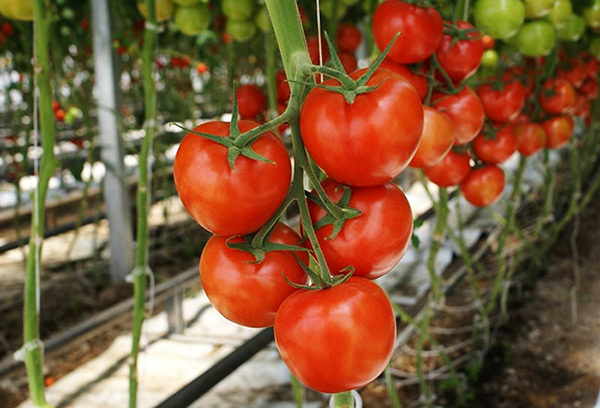
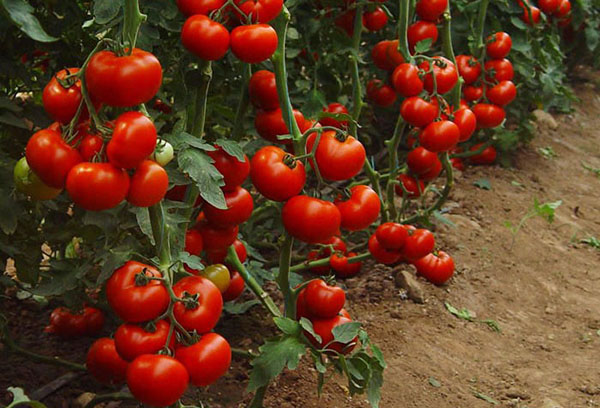
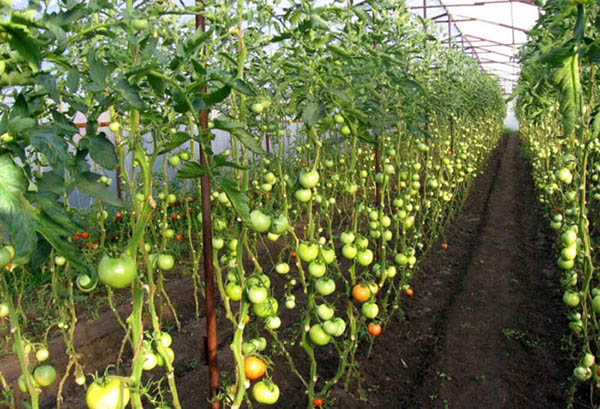
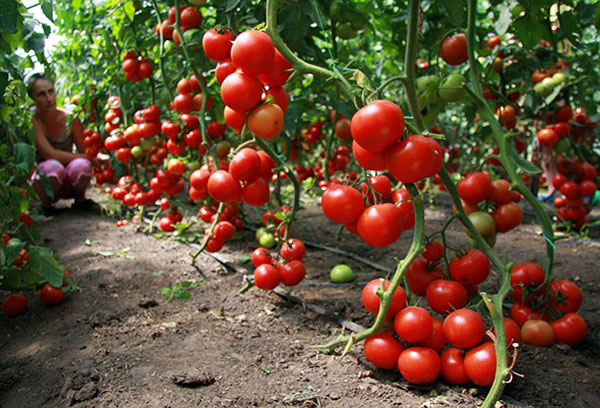
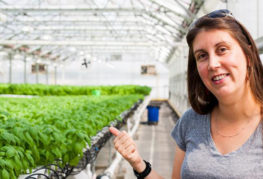
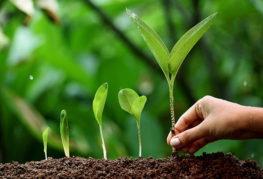
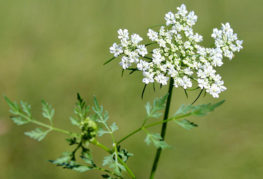
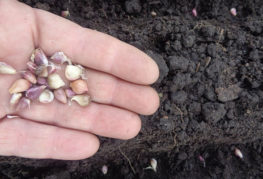
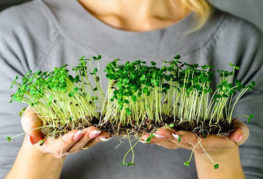

and will be published shortly.